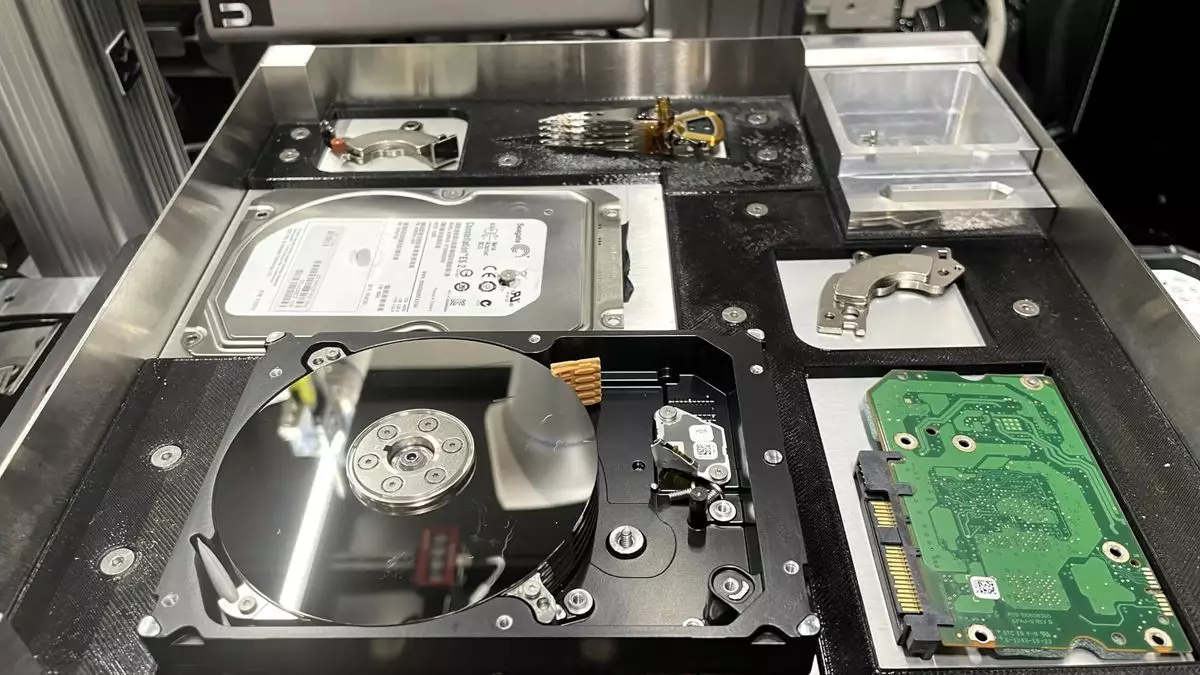In an era where technology is undergoing rapid advancements, the environmental impact of discarded electronic devices has emerged as a pressing concern. E-waste, particularly from data centers, constitutes a staggering 50 million metric tons annually, with hard drives being a significant contributor. This raises critical questions about the sustainability of our tech-driven society. However, companies like Microsoft are spearheading innovative approaches to tackle the issue, proposing the use of robotics and artificial intelligence (AI) for efficient recycling and reuse of hard drives.
The E-Waste Challenge: Scope and Impact
The digital infrastructure supporting our modern conveniences produces an enormous volume of discarded hardware, particularly hard drives. Every year, 20 to 70 million of these drives find their way to the shredder, a drastic measure taken to safeguard sensitive data. Unfortunately, this process leads to a minimal recycling rate, as much of the material ends up wasted. Recent discussions led by principal data scientist Ranganathan Srikanth at Microsoft have unveiled the dire need for a paradigm shift in how we handle e-waste—one that prioritizes not just the protection of information but the sustainability of resources.
As the demand for storage solutions grows, replacing hard drives becomes commonplace to ensure reliability and performance. This habitual cycling of hardware creates an alarming volume of e-waste, which is predominantly destroyed rather than effectively recycled. Srikanth’s project’s ambition is not just to improve the recycling process but to achieve a 90% reuse and recycle rate for hard drives by 2025—a challenging yet laudable target.
At the heart of this ambitious project is the integration of robots and machine learning to automate the disassembly of hard drives. Traditional methods of recycling can be inefficient and labor-intensive, making manual disassembly impractical at scale. Employing robots to take apart drives, separate components, and recover materials is not just a matter of convenience; it is a necessity given the immense scale of the challenge.
Automating the disassembly process addresses the significant inefficiencies present in current practices. Robots can be programmed to identify various materials, such as the valuable neodymium magnets found in hard drives, enabling a streamlined recycling process that minimizes waste. While it seems straightforward to disassemble devices, the complexity lies within the identification and sorting of diverse components, which demands extensive AI training and adaptation.
Despite the potential of this robotic approach, several hurdles remain. The disassembly of a hard drive may appear uniform, but in practice, it involves a myriad of screws and parts, each requiring adept recognition and handling capabilities. Training AI to adeptly identify and sort these elements is an ongoing project and presents its own set of challenges.
As the process develops, it is crucial to consider the broader implications for the recycling industry. The techniques being honed for hard drives could eventually extend to other electronic components, such as entire computers and laptops. The recycling of these more complex devices, which host a wide array of materials, presents a bigger task—nevertheless, the potential benefits are significant. E-waste is not merely an environmental issue; harnessing valuable resources contained within discarded electronics can lead to a more circular economy.
Conclusion: A Greener Future Through Innovation
The challenge of e-waste is emblematic of the broader environmental implications of our technology reliance. Microsoft’s proactive approach to hard drive recycling, leveraging robots and AI, signifies a critical step toward mitigating these impacts. While the road ahead remains fraught with challenges, the initiative highlights the urgency of innovation in crafting sustainable solutions for electronic waste.
By investing in and refining robotic processes for the efficient recycling of hard drives—and potentially other electronic devices in the future—we move closer to implementing a more responsible, environmentally conscious framework for technology use. As society progresses, we must embrace such advancements to not only safeguard our data but to also protect the planet for future generations. This initiative not only enhances recycling efforts but cultivates hope for a more sustainable technological landscape.


Leave a Reply